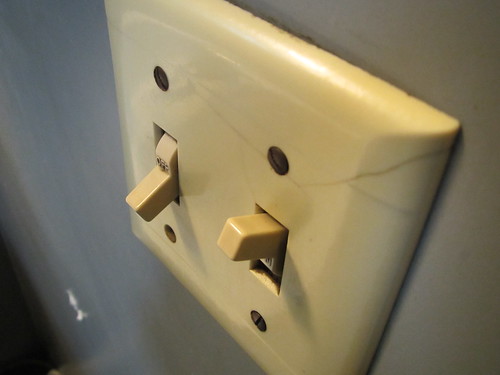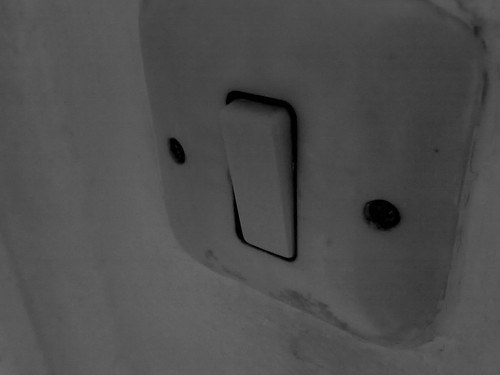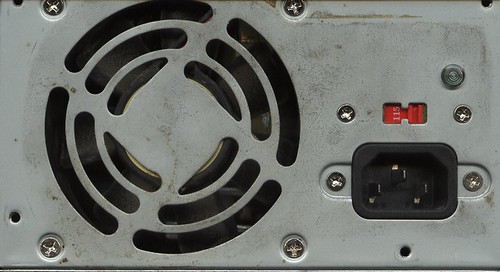it’s amazing that people find the on/off switch *that* confusing. I wonder how do they turn on and off the lights in their houses @ebassi
Dear GNOME designers,
When you came up with the original idea of GtkSwitch (or looked at iOS and thought “ooh, shiny”, I don’t blame you), you overlooked the problem of localization. Just as today’s kids have no idea what a floppy is, most of us, Europeans, have no idea what device this widget represents and how it is supposed to work.
What you see:
What you think:

Light switch in the bathroom by anotherpioneer, on Flickr (cc) BY-NC
What you really think: a freakin’ light switch!
For reference, here’s a light switch we use in Europe:

240720081083 by jakub.szestowicki, on Flickr (cc) BY-SA
Pressing the top turns the lights on, pressing the bottom turns them off. The ends are unlabelled.
The only device that I could find that matches GNOME’s current behavior for the GtkSwitch is the voltage switch on a PSU. See the red part. You slide it with a flat screwdriver to tell the PSU if the input voltage is 115V or 230V (which, again, is a standard here in Europe):

Power-Supply-noswitch by Kevin Byrom, on Flickr (cc) BY-SA
Update: apparently none of this is true¹ and the widget is perfect. Therefore I stand corrected. Hats off then and bonus points for the humor in the implementation. “How do I turn it OFF?” “It’s easy, just click and drag it all the way to where it says ON.”

